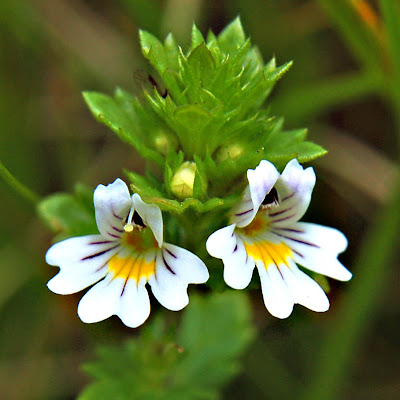As might be expected, there were many insects about. One which particularly caught my attention was the Chimney Sweeper moth (Odezia atrata), a small, day-flying white-tipped but otherwise plain black moth which I had not seen before. Apparently the Chimney Sweeper relies on the Pignut flower for its existence, it being the only food plant of the moth's caterpillar. I hope the next part of this series will include pictures of some of the insects visiting the hay meadows.
Now to the flowers: They were all photographed using my standard Nikkor 18-55mm lens and a 6 dioptre close-up lens. This is only a selection of the flowers on display. If a reader finds that I have wrongly identified any of the flowers, I am more than happy to be corrected (I am not entirely confident about the Bitter Vetch, although the SSSI description suggests it is found on site).









4 comments:
Lovely macros Emma, I have never seen that eyebright.
Beautiful shots Emma.
The blue of the Wood Crane's Bill, against the green background is a great contrast.
Eyebright; never seen one, but what a flower. You'd never forget it. A beauty.
Some great shots here. I especially like the Eyebright. As I'm just getting to grips with plants I checked out the Bitter Vetch. I noted that it's seeds have a very toxic amino acid which in large amounts can cause a disease of the nervous system called lathyrism! Cheers Brian.
Superb blog Emma, your photos look superb on the black canvas - abd that shot of a brown ringlet is just . . . .. . lost for words. You can see the light through its wing!
Keep it up,
Graham
Post a Comment